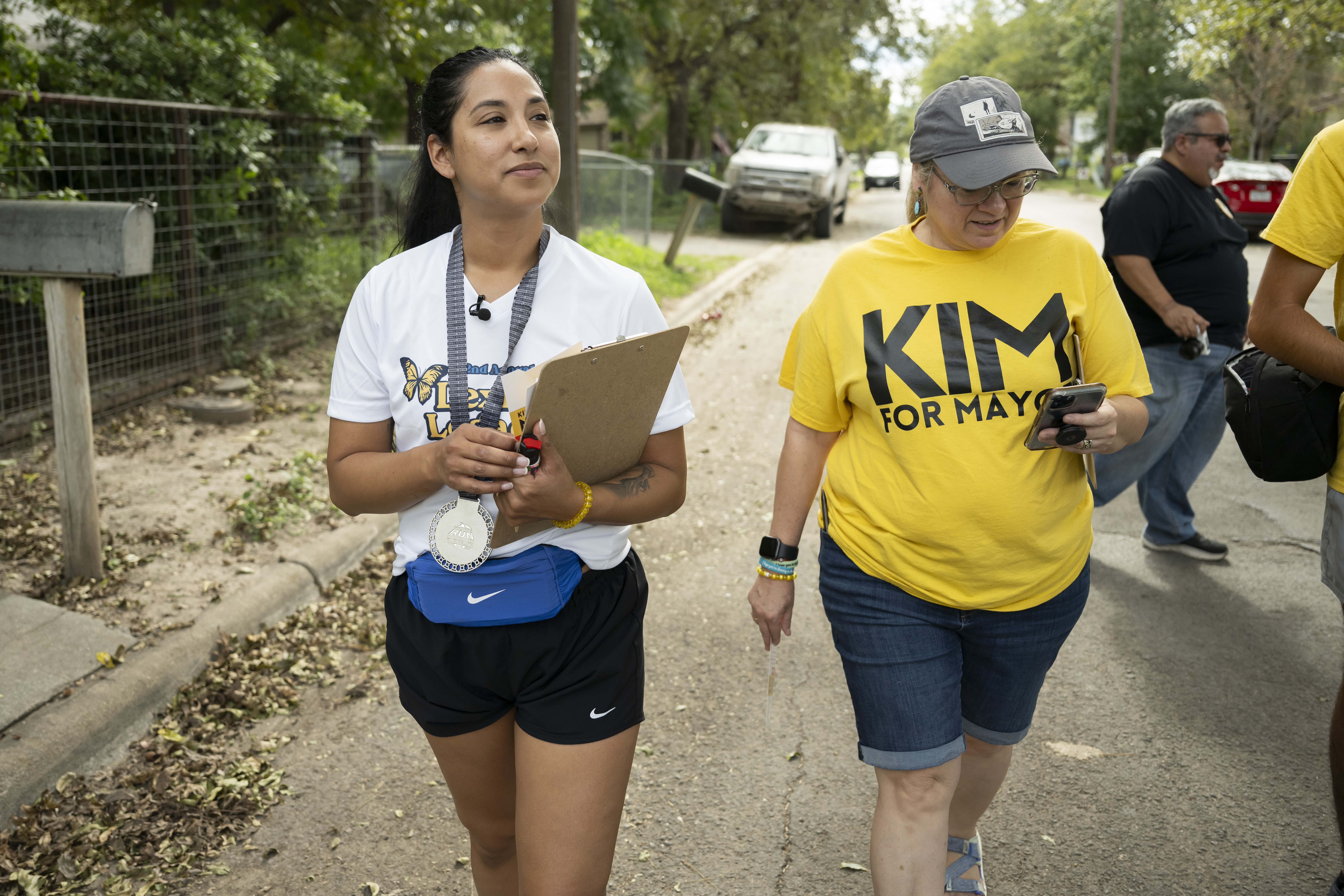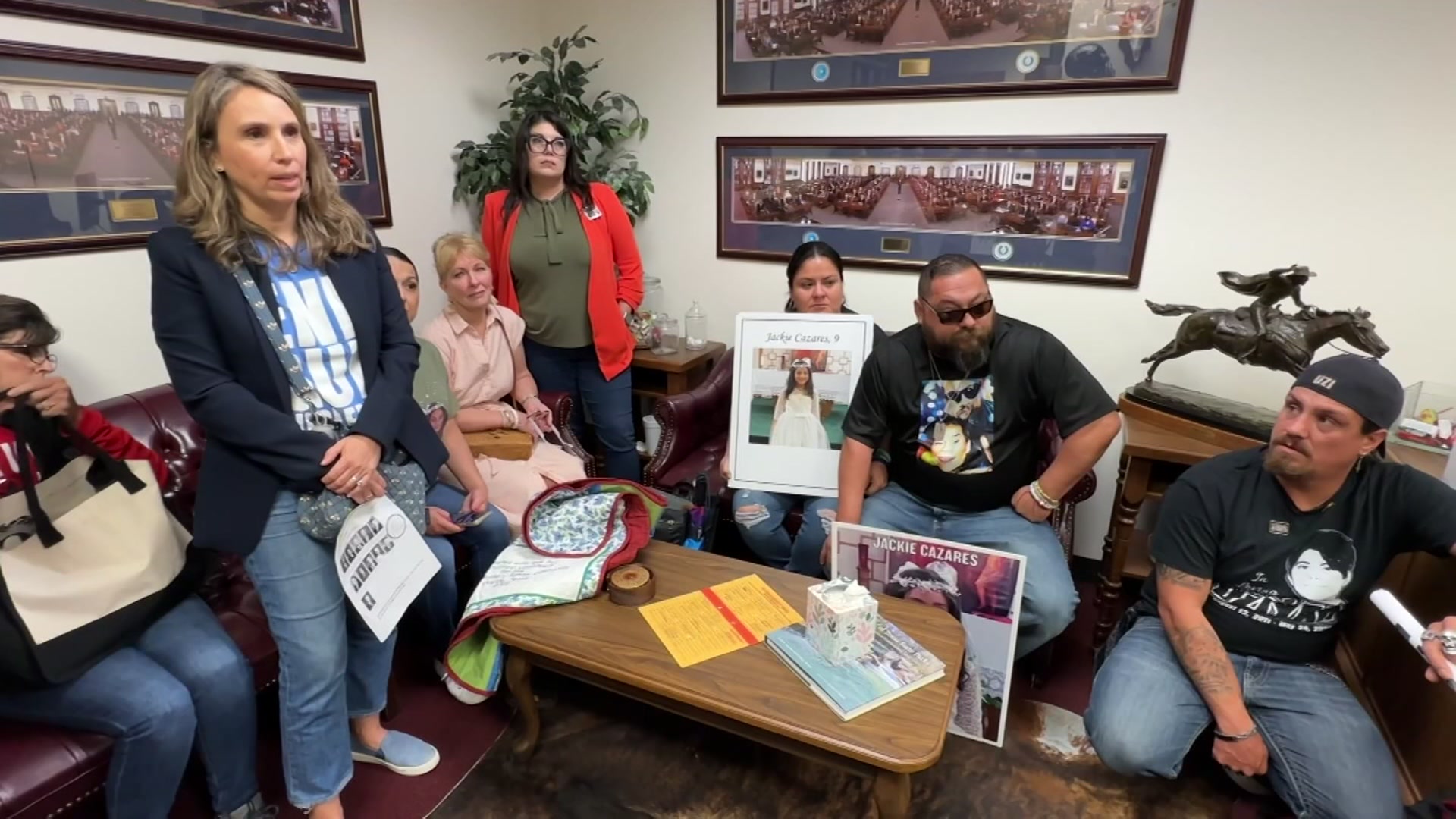Police officials who responded to the deadly school shooting in Uvalde, Texas waited far too long to confront the gunman, acted with “no urgency” in establishing a command post and repeatedly communicated inaccurate information to grieving families, according to a Justice Department report released Thursday that identifies “cascading failures” in law enforcement's handling of the massacre.
The Justice Department report, the most comprehensive federal accounting of the haphazard police response to the shooting at Robb Elementary School, identifies a vast array of problems from failed communication and leadership to inadequate technology and training that federal officials say contributed to the crisis lasting far longer than it should have, even as terrified students inside the classrooms called 911 and agonized parents begged officers to go in.
WATCH ANYTIME FOR FREE
Stream NBC10 Boston news for free, 24/7, wherever you are. |
“I told the families gathered last night what I hope is clear among the hundreds of pages and thousands of details in this report: Their loved ones deserved better,” Attorney General Merrick Garland said at a news conference in Uvalde on Thursday after briefing family members on the Justice Department's findings.
Even for a mass shooting that has already been the subject of intense scrutiny and in-depth examinations — an earlier report by Texas lawmakers, for instance, faulted law enforcement at every level with failing “to prioritize saving innocent lives over their own safety" — the nearly 600-page Justice Department report adds to the public understanding of how police failed to stop an attack that killed 19 children and two staff members.
Get updates on what's happening in Boston to your inbox. Sign up for our News Headlines newsletter.
The report underscores how police made a costly error in assuming that the shooter was barricaded, or otherwise contained or dead, even as he continued to fire shots. That mistaken “mindset permeated throughout much of the incident response" as police, rather than rushing inside the classrooms to end the carnage, waited nearly an hour to confront the gunman in what the report called a costly “lack of urgency.”
The gunman, Salvador Ramos, was killed roughly 77 minutes after police arrived on the scene, when a tactical team led by the Border Patrol eventually went into the classroom to take him down.
“An active shooter with access to victims should never be considered and treated as a barricaded subject,” the report says, with the word “never” emphasized in italics.
In other errors, the report says, police acted with “no urgency” in establishing a command center at the scene, creating confusion among police about who was in charge. Officials also hindered the response, with the then-school district police chief, Pete Arredondo, discarding his radios on arrival because he deemed them unnecessary.
Although Arredondo tried to communicate by phone with officers elsewhere in the school hallway, he told them not to enter the classrooms “because he appeared to determine that other victims should first be removed from nearby classrooms to prevent further injury.”
Uvalde, a community of more than 15,000 about 85 miles (140 kilometers) southwest of San Antonio, continues to struggle with the trauma left by the killing of 19 elementary students and two teachers, and remains divided on questions of accountability for officers’ actions and inaction. Uvalde County District Attorney Christina Mitchell has said she’s still considering whether to bring criminal charges related to the shooting.
Recommended:
In Texas, Republican Gov. Greg Abbott initially praised the officers’ courage, and blame was later cast on local authorities in Uvalde. But a report from a panel of state lawmakers and investigations by journalists laid bare how over the course of more than 70 minutes, a mass of officers went in and out of the school with weapons drawn but did not go inside the classroom where the shooting was taking place.
In fact, the Justice Department report details how early policing errors were compounded by communication failures in the ensuing days as authorities distributed inaccurate and conflicting information, sowing rumors and misinformation.
In one case, Texas Department of Public Safety Director Steve McCraw falsely accused a school staffer of propping open a door that the shooter used to enter the building, a statement that unleashed a wave of anger and vilification. In fact, the employee was among the first to call 911 and warn others about the shooter, and she did not prop open the door.
“The actions of the responding officers, combined with the ‘heroic’ storyline that started with (a spokesperson for the Texas Department of Public Safety) and continued the next day during the Governor’s and director’s news conference, dealt a serious blow to public confidence in local and state law enforcement,” the report states.
The report intentionally omits the identify of the gunman, focusing solely on the failed police response. But it does include page-long remembrances of each of the victims, including 10-year-old Jose Flores Jr., who loved cars and the Houston Astros, and Amerie Jo Garza, who on the morning of the shooting had celebrated her appointment to the honor roll.
It also includes anguished and panicked quotes from the students — “Help!” “Help!” “Help!” “I don't want to die. My teacher is dead” — on a 911 call while they remained trapped in the classroom, experiencing “unimaginable horror” while law enforcement was in the hallway.
In the 20 months since the Justice Department announced its review, footage showing police waiting in a hallway outside the fourth-grade classrooms where the gunman opened fire has become the target of national criticism.
Garland was in Uvalde on Wednesday ahead of the release of the report, visiting murals of the victims that have been painted around the center of the town. Later that night, Justice Department officials privately briefed family members at a community center in Uvalde before the findings were made public.
Velma Lisa Duran, whose sister Irma Garcia was one of the teachers killed, said she spoke by phone with a Justice Department official Tuesday and is grateful for the agency’s work but has not yet read the report.
Duran, 52, said she had read the state lawmakers' report and watched body camera video from the shooting. She’s daunted by the prospect of reliving the circumstances of her sister’s death, once again, over hundreds of pages, and what she really wants is criminal charges.
“A report doesn’t matter when there are no consequences for actions that are so vile and murderous and evil,” said Duran. “What do you want us to do with another report? ... Bring it to court,” she said.
The federal review was launched just days after the shooting, and local prosecutors are still evaluating a separate criminal investigation by the Texas Rangers. Several of the officers involved have lost their jobs.
How police respond to mass shootings around the country has been scrutinized since the tragedy.
The delayed response countered active-shooter training that emphasizes confronting the gunman, a standard established more than two decades ago after the mass shooting at Columbine High School showed that waiting cost lives. As what happened during the shooting has become clear, the families of some victims have blasted police as cowards and demanded resignations.
At least five officers lost their jobs, including two Department of Public Safety officers and the on-site commander, Arredondo.
___
Associated Press writers Eric Tucker and Lindsay Whitehurst contributed to this report.



